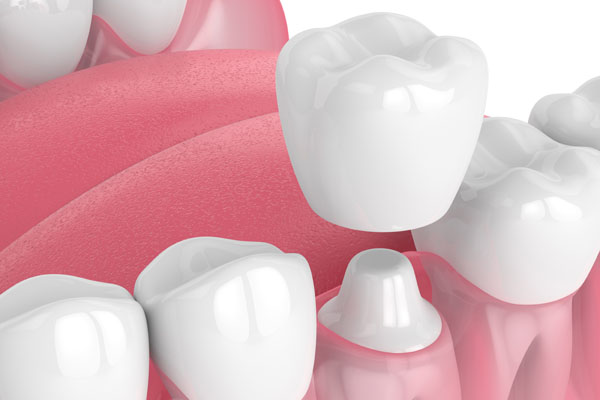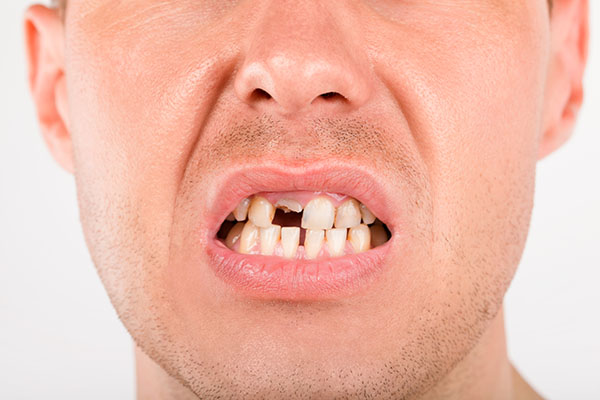Benefits of Metal-Free Fillings for Teeth

If you have a cavity, you are likely exploring your options, including metal-free fillings. Before you choose these fillings, you want to learn the benefits. Find out why so many people choose this dental restoration option.
Benefits of metal-free fillings
Metal-free, or composite, fillings usually consist of a plastic and ceramic compound. This is a departure from metal fillings that are normally made of silver and mercury. The composite material offers various benefits to dental patients.
A natural look
Metal fillings are noticeable when people talk, eat and smile. Many people feel self-conscious about flashing metal fillings to the world. Composite resin fillings are tooth-colored, so this dental restoration is not noticeable. Many people prefer the natural look these fillings offer.
Not impacted by temperature fluctuations
People with metal fillings often experience sensitivity when the fillings are exposed to heat or cold. Also, these fillings can contract or contrast based on temperature changes. This is very difficult on the teeth. When people have composite fillings, they can eat and drink hot and cold items without sensitivity. Also, these fillings maintain the proper shape, even when exposed to extreme temperatures.
Less drilling
To place metal fillings, the dentist must first drill a large hole in the tooth. The dentist has to remove some of the healthy tooth structure to make room to accommodate metal fillings. The same is not true for metal-free fillings. The composite material is flexible and easily bonds with the tooth. That means less drilling is required to place the filling. It is always a good idea to preserve as much of the natural tooth structure as possible, so this is an important benefit.
Increases the strength of the tooth
Composite fillings attach to the tooth. This improves the tooth’s overalls strength. It also ensures that the filling remains in place instead of shifting.
Metal fillings do not bond with the tooth. These fillings simply cover up a hole. This weakens the tooth’s structure and makes it prone to cracking and breaking. The filling can also shift out of place, requiring replacement.
Easier to repair
Fillings fail from time to time, regardless of the material used for the restoration. Repairing composite fillings is quite simple. The dentist simply adds additional composite to the tooth.
Repairing metal fillings is much more difficult. The dentist must remove the entire filling and place a new one. In many cases, the dentist has to remove some of the healthy tooth structure once again. This further weakens the tooth.
Creates a tight seal
Filling a tooth does not protect it from decay. Bacteria can still eat away at the tooth and cause a cavity. However, it is more difficult for that to happen with a composite filling. The filling forms a tight seal so decay cannot get underneath it. Metal fillings do not seal the tooth as well. That makes the tooth more prone to additional decay.
Do you want composite fillings?
Metal-free fillings provide lots of benefits. Composite fillings look natural, are not affected by changes in temperature and require less drilling to place. These fillings also make teeth stronger, are easier to repair than metal fillings and create a tight seal that protects against additional decay. Talk to your dentist to see if you are a good candidate for composite fillings.
Request an appointment here: https://metrosmiles.com or call Metro Smiles Dental at (718) 841-9591 for an appointment in our Forest Hills office.
Check out what others are saying about our services on Yelp: Read our Yelp reviews.
Recent Posts
Crowns are commonly used in dental restorations. A crown is a cap shaped like a tooth but hollow in the middle. It fits over a natural tooth that has to be prepared first. Depending on the issue it is correcting, a crown can be used by itself or as a component of another restoration technique.Teeth…
Dental restorations are used to repair or strengthen damaged teeth and to replace missing teeth. The damage may be the result of routine decay, extensive decay, fractures, weak gums, and many other dental issues. Dentists recommend restorations based on the tooth, its location, the source of trouble, the health of surrounding teeth, tooth color, patient…
A dental crown can restore a damaged, worn, or weakened tooth. This restoration can bring back your healthy smile and stable dental function. Knowing the benefits of dental caps can motivate you to set an appointment soon. Here are the benefits of a dental crown that you must consider.Losing a tooth can be annoying, especially…
Dental restorations help individuals regain oral functions like chewing and achieve better smiles. Although dentists' skills and experience are necessary to achieve favorable results, material choices contribute significantly to patient satisfaction.Dentists consider the location of teeth in the mouth and patients' input when selecting materials for dental restorations.Dentists aim to restore the function and appearance…


